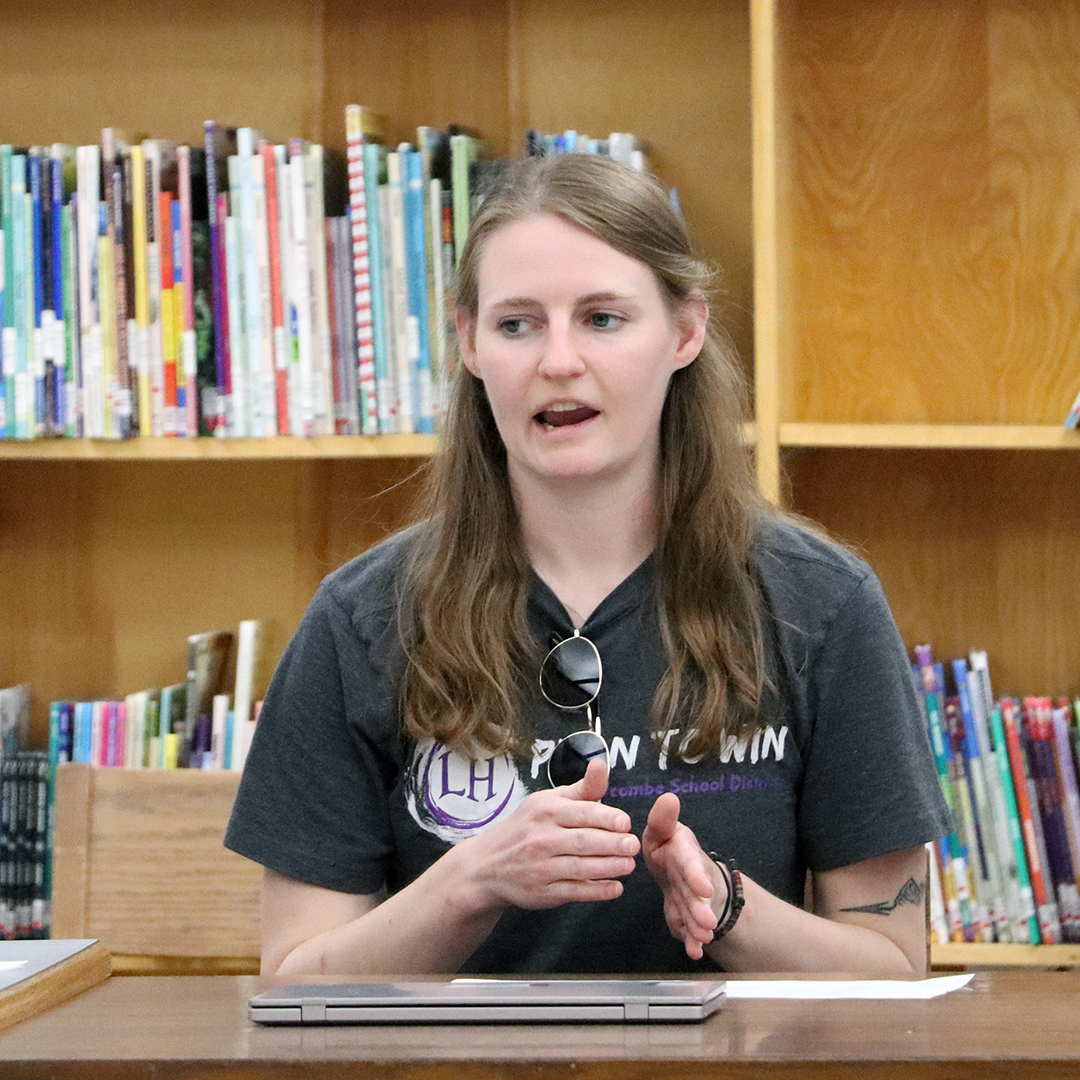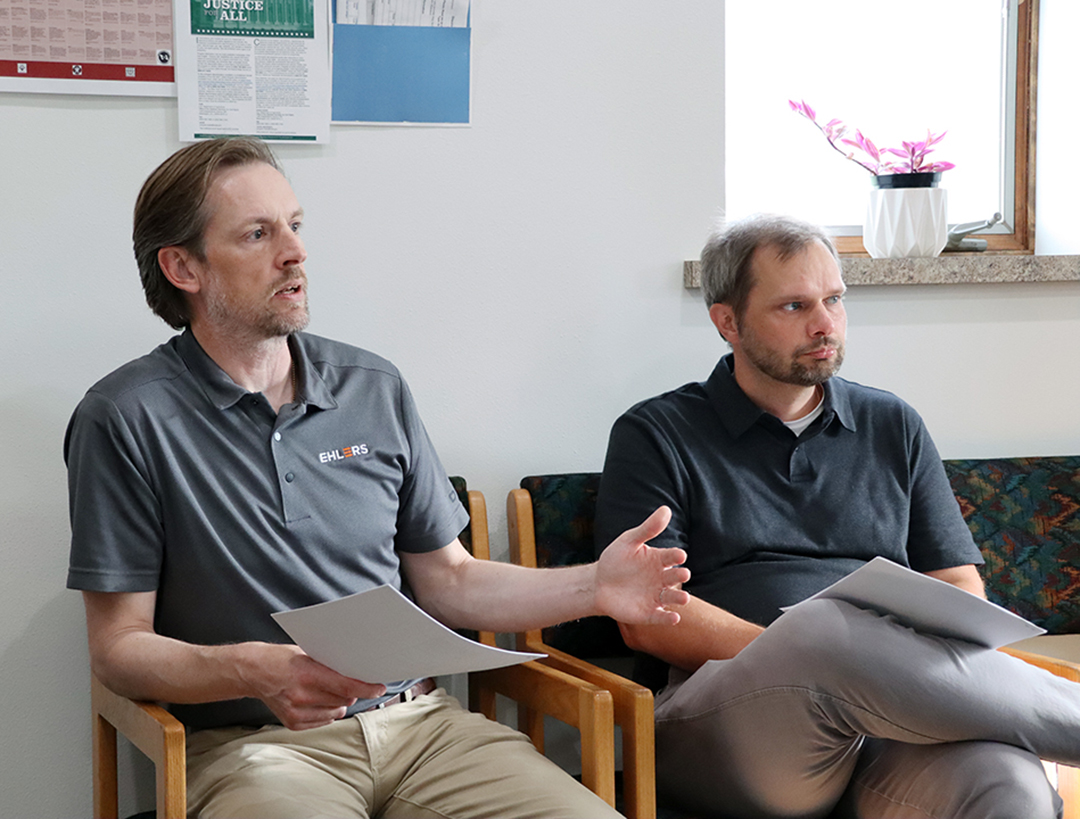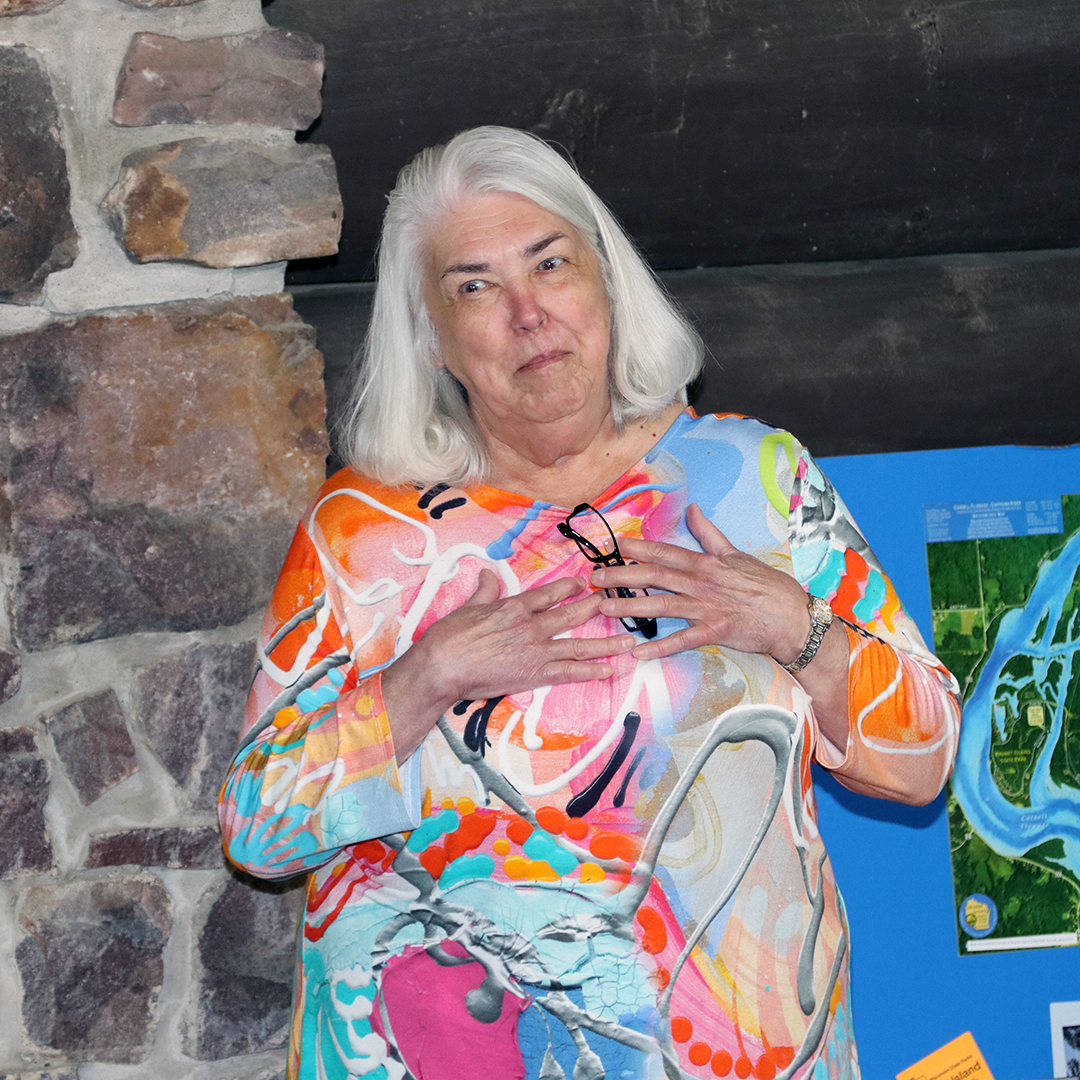Is there a better state park? We don’t think so either!


Mary Flood Carlson spoke June 8, during a celebration of Brunet Island State Park’s 85th anniversary, about how important the park is to her, as her mother loved it with all her heart. Photo by Ginna Young
By Ginna Young
Described as a hidden gem, Brunet Island State Park, located in Cornell, is rapidly becoming not-so-hidden. The property gets thousands, if not more, visitors each year, whether through camping, hiking, biking, picnicking, kayaking or swimming at the playground beach area.
This year, marks 85 years, since the park was dedicated, Sept. 15, 1940, and while it’s undergone numerous changes, one thing remains the same. How beloved it is by locals.
The history of the park truly begins, when things were set into motion in 1912, the hydro dam was built across the Chippewa River, while the unincorporated Village of Cornell, came into existence in 1913. Fast forward to 1922, when Cornell servicemen came home from World War I and formed American Legion Post 353.
Almost 15 years later, in 1935, that same group of guys was having coffee, when they talked about that island in the middle of the river stream. They decided the area would be a perfect town park.
That group went to the community, who felt it was too big a job for just little old them. So, they went to the county.
“Same thing, can’t do it,” said Mary Flood Carlson, who grew up in Cornell, and penned a history of the park.
Not to be deterred, the group went to the state, which was called the Wisconsin Conservation Department (pre-DNR). There, they got the go ahead and were told they would get help with the project.
“But, there were two stipulations,” said Carlson. First, the group had to figure out how to fill the road from Cornell to the river, and to find a bridge to cross over to the island. It was a big order, but Cornell was up to the challenge.
At that time, NSP sold the island to the group, for $1. The group then found a bridge located near Jim Falls, in 1939-40, which was dismantled and reassembled to reach the island.
“They liked to do that kind of bridge work in the winter, so they could use slides,” said Carlson.
That bridge remained in place until the early 1960s, when the current bridge was constructed.
The park sticker program also began around 1962, when vehicles were required to purchase a sticker to camp and park on the island. In fact, there used to be a kiosk, at the entrance to Brunet Island State Park, but that was relocated to the Chippewa River Bike Trail in Eau Claire, at Short Street, in Shawtown, and the second road lane where it sat at the entrance at Brunet, is now a grassy area.
In the beginning, Brunet Island had 200 acres, counting the outlying smaller islands. By the early 1960s, the state purchased additional land from NSP, just before crossing the bridge, where the park office is.
“Over the next decade, there was quite a bit of expansion,” said former park manager Mike Rivers.
Included in that, was another 100 acres purchased behind the park office, while in 1969, they purchased 90 acres across the river, where the little pond (Perch Lake) is. That was done so housing development could not take place and “ruin” the natural view from the park.
The state also purchased all the shoreline surrounding the park, which now has 1,300 acres to its credit.
Rivers found it amusing, in his research of the history, that the first park manager wrote his boss, that he didn’t understand how he could be expected to run the park for six months, with a budget of just $100.
“About 2015, I was writing the exact same letter, but I had a different dollar amount,” said Rivers. “There have been a lot of changes and development over the years.”
While there are a lot of new things at the park, such as indoor toilets and showers, there have also been things that have gone away. The current beach used to be situated where the kayak dock is now, as there is a strong undercurrent and a drop-off. After someone drowned at the spot, the current beach was made.
There was also a Boy Scout cabin on the property and an amphitheater, on what is known as picnic point. In addition, a small old concession stand, used when there were ballgames and family gatherings, was later torn down, as was the custodian house.
No matter the changes or how many out-of-town people come through, Cornell residents remain loyal to their park, and can be seen taking a drive around the island of an evening, enjoying the peace, beauty and abundant wildlife.
They love it so much so, that when someone passes, their family makes sure they get to say goodbye. Carlson knows this firsthand, as her mother went for a ride around the park after she passed, before the family headed to the cemetery for burial.
“Often, people did with that with their loved ones, for their last ride around the park,” said Carlson.






